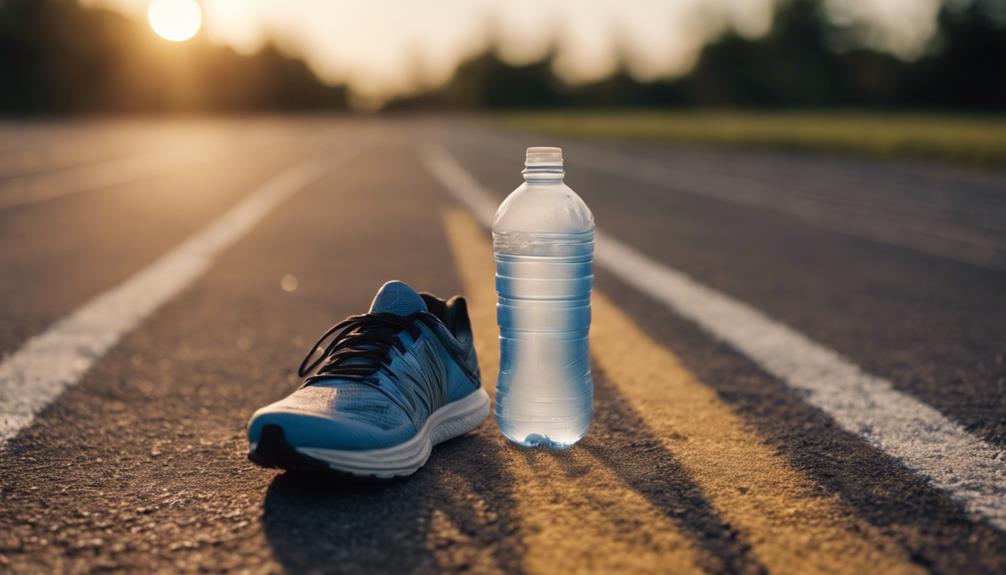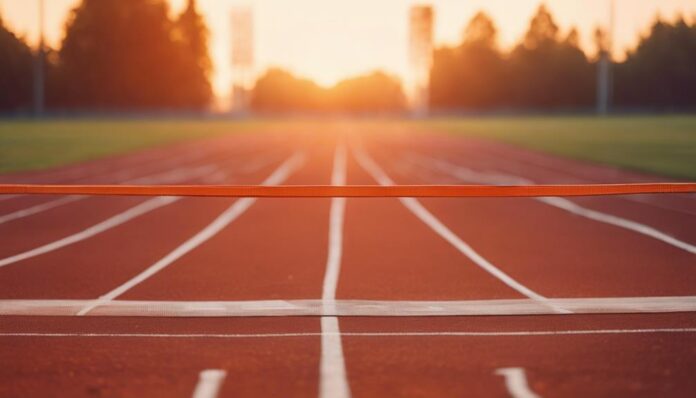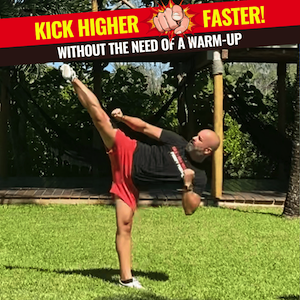As an older athlete over 40, you face unique challenges that can impact your performance and longevity in sports. Setting specific, measurable, and achievable goals helps you maintain high physical performance, overcome psychological barriers, and counter age-related decline. By establishing clear goals, you'll enhance your mental resilience, foster community engagement, and boost physical performance, ultimately contributing to your overall well-being and mental health. To optimize your training and achieve success, it is crucial to understand the physical changes that occur with aging and adjust your approach accordingly – a nuanced process that requires careful consideration of multiple factors.
Setting Goals for Athletic Success
Setting the stage for success, establishing clear goals is an essential step for older athletes looking to maintain a high level of physical performance. As you set your goals, you'll find that internal motivation plays a significant role in driving your engagement in physical activity.
Research indicates that autonomous and internally driven goals lead to enhanced motivation and adherence to fitness objectives. In fact, studies have shown that 42% of older athletes cite health improvement as a primary goal for their physical activity.
By setting specific, achievable goals, you'll be able to maintain motivation and focus, helping you to overcome psychological barriers such as the fear of re-injury. Additionally, goal setting outcomes related to functional maintenance, such as strength and balance, are emphasized by 71% of older athletes, highlighting the importance of tailored objectives in your training regimen.
Understanding Age-Related Performance Decline
As you age, your body undergoes significant physical changes that impact athletic performance, including declining VO2 max, shifting hormonal balances, and increasing body fat.
These changes contribute to performance decline, with peak endurance performance typically occurring in the late 20s to early 30s and a significant linear decline beginning around age 40.
To set realistic goals, you need to understand how these age-related physical changes affect your performance and adjust your training strategies accordingly.
Physical Changes With Age
The human body undergoes significant physiological changes with age, impacts that are particularly pronounced in older athletes. As you age, your aerobic capacity, measured by VO2 max, declines by 1-2% annually after age 40, negatively impacting your endurance performance and recovery rates. This decline contributes to a 10-20% loss of maximum aerobic capacity by age 50.
Your body also experiences hormonal balance shifts, loss of muscle mass, and increased body fat, all of which decrease your athletic performance. Additionally, your recovery times increase with age, necessitating longer periods between training sessions to avoid injuries and allow for adequate muscle repair.
As a result, your performance decline accelerates, affecting your overall endurance performance. By understanding these age-related changes, you can adjust your training regimens to account for decreased VO2 max, slower recovery, and increased fatigue levels during physical activity.
This knowledge will enable you to set realistic goals and develop strategies to mitigate the effects of aging on your athletic performance.
Factors Affecting Performance Decline
While it's widely recognized that athletic performance declines with age, understanding the specific factors contributing to this decline is essential for developing effective training strategies.
As you age, you can expect to lose 10-20% of your maximum aerobic capacity between 40 and 50 years old. Your VO2 max, a key indicator of aerobic fitness, declines by 1-2% annually starting around age 40. This decline affects your overall endurance and performance abilities.
As you get older, you'll also notice changes in your body composition, such as decreased muscle mass and increased body fat. Hormonal shifts lead to slower recovery times and altered biomechanics, reducing your running efficiency.
This means you'll need more time to recover between training sessions, which can be a significant challenge. Psychological factors also play a role, as fear of injury and comparing yourself to past performances can affect your motivation and willingness to train.
As an aging athlete, understanding these factors is essential to developing a training plan that takes into account your changing needs and abilities. By acknowledging these factors, you can adjust your training and set realistic goals to mitigate performance decline.
Benefits of Goal Setting for Seniors
As you set specific, achievable goals, you'll experience enhanced mental resilience, enabling you to better cope with age-related performance decline.
By pursuing goals that promote physical activity, you'll also foster community engagement, connecting with like-minded older adults who share your passion for fitness.
Ultimately, goal setting will boost your physical performance, allowing you to maintain functional aspects like strength and balance that are essential for sustaining independence.
Enhances Mental Resilience
Setting specific, meaningful goals ignites a spark of motivation in older athletes, fueling their mental resilience and ability to cope with the challenges of aging. By providing clear objectives, goal setting fosters a sense of purpose and direction, countering feelings of uncertainty and decline often associated with aging. Research shows that this process leads to stronger internal motivation, making you more likely to engage consistently in physical activities that enhance your fitness and well-being.
As you achieve your set goals, you'll bolster your self-confidence and self-efficacy, enhancing your ability to cope with challenges and setbacks faced during training and competition.
Regular goal setting allows you to redefine your limits, promoting a growth mindset that encourages adaptability and resilience. This mental resilience is essential for maneuvering the physical and psychological changes of aging.
By adopting a growth mindset, you'll be better equipped to handle the demands of training and competition, ultimately leading to improved overall performance and well-being.
Fosters Community Engagement
Goal setting not only enhances your mental resilience, but it also has a profound impact on your social connections as an older athlete. By setting specific, meaningful goals, you'll enhance ownership of your fitness journey, encouraging you to engage with others who share similar aspirations and challenges.
Research indicates that 70% of older adults fail to meet physical activity guidelines, highlighting the essential role of goal setting in motivating participation and building connections.
As you engage in goal-oriented activities, you'll create opportunities for social interactions, allowing you to bond with others over shared experiences and achievements in physical pursuits. This sense of community engagement fosters camaraderie and mutual support during training and events, promoting a sense of belonging among older athletes.
By reinforcing social connections, goal setting contributes to overall well-being and mental health, making it an essential component of a healthy, active lifestyle.
Boosts Physical Performance
How effective is goal setting in enhancing physical performance among older athletes? Research suggests that setting specific, targeted objectives can lead to significant improvements in physical performance. In fact, 42% of older athletes cite goal setting as a primary focus for enhancing physical performance, highlighting its importance in achieving health improvements.
As an older athlete, you'll likely emphasize specific goals related to functional maintenance, such as strength and balance, which 71% of older athletes identify as key objectives. Engaging in goal setting can also reduce stress and promote overall well-being, with 38% of older athletes recognizing its role in enhancing mental health.
Moreover, setting and achieving specific physical activity goals can help prevent age-related decline, as reported by 42% of older athletes. By taking an autonomous approach to goal setting, you'll demonstrate higher internal motivation, leading to increased engagement and ownership of your physical performance.
This, in turn, can lead to better overall physical function and a reduced risk of age-related decline, underlining the importance of goal setting in boosting physical performance among older athletes. By adopting goal setting strategies, you can take charge of your physical performance and overall health.
Crafting Effective Training Plans
A well-crafted training plan is essential for older athletes over 40, as it not only enhances performance but also prioritizes health and functional maintenance. When creating your training plan, you should include specific goal setting, as research shows that 42% of participants in a study cited health improvement as a primary focus for engaging in physical activity.
Your plan should emphasize functional maintenance, with a focus on strength and balance, which are vital for daily activities and injury prevention. Incorporating a variety of training methods, such as strength training and high-intensity interval training (HIIT), can help mitigate age-related muscle loss and support ongoing performance levels.
It's also important to acknowledge that motivation is often internally driven, so your training plan should align with your personal goals and interests to enhance ownership and engagement in physical activity. Regular assessments of progress and adaptations to training intensity are also necessary, as you may require more recovery time and tailored approaches to maintain physical capabilities effectively.
Overcoming Mental and Physical Barriers

As you implement your well-crafted training plan, you'll inevitably encounter mental and physical barriers that can hinder progress and undermine motivation. To overcome these obstacles, it's crucial to tap into the power of goal setting. By setting specific, meaningful goals, you'll foster greater ownership and engagement in your physical activity, leading to stronger intrinsic motivation. This, in turn, will aid in overcoming both mental and physical barriers to sustained physical activity.
Goal setting also enhances mental toughness, allowing you to manage discomfort and fatigue more effectively. By shifting your mindset towards participation enjoyment rather than competition alone, you'll be better equipped to handle the psychological barriers that can hinder training intensity.
Additionally, research indicates that health improvement is a primary focus for 42% of older athletes, demonstrating that specific goals can drive motivation and progress. By emphasizing functional aspects like strength and balance in your goal-setting outcomes, you'll be able to maintain physical activity and prevent age-related decline, ultimately achieving your goals and reaping the rewards of sustained physical activity.
Adapting to Age-Related Changes
Physiological changes are an inevitable consequence of aging, and older athletes must adapt their training strategies to mitigate these effects. As you age, your VO2 max declines, and your recovery time increases, making it essential to set clear objectives to maintain motivation and performance.
Goal setting becomes increasingly important to combat age-related changes and prioritize health improvement.
When adapting to age-related changes, consider the following:
- Set functional goals, such as maintaining strength and balance, to prevent deterioration in physical capabilities.
- Establish achievable short-term goals to help navigate your training schedules effectively and maintain consistency.
- Prioritize intrinsic motivation by focusing on personal health and enjoyment rather than competition.
- Develop a goal-setting framework that addresses specific health-related objectives, such as improving cardiovascular health or reducing injury risk.
- Regularly reassess and adjust your goals to guarantee they align with your changing needs and abilities.
Building Resilience and Motivation

Your ability to adapt to age-related changes hinges on more than just adjusting your training strategies – it also relies on building resilience and motivation.
As an older athlete over 40, goal setting plays an essential role in fostering a sense of autonomy and motivation, leading to enhanced ownership and engagement in physical activity.
Research indicates that health improvement is a primary focus for 42% of older adults, underscoring the importance of setting specific, health-oriented goals.
Efficient Training Strategies for Seniors
When you're over 40, your training approach requires a shift from sheer intensity and volume to smarter, more efficient methods that maximize results while minimizing the risk of injury or burnout.
As you age, your body undergoes natural changes that affect your physical performance, making it essential to adopt a more efficient training strategy.
To maintain muscle mass and performance levels, focus on training efficiency by incorporating lower volume workouts, such as performing five sets of five repetitions with heavier weights.
Additionally, High-Intensity Interval Training (HIIT) is effective for cardiovascular health in seniors, particularly with shorter intervals of around one minute.
Some efficient training strategies for seniors include:
- Utilizing strength training to counteract age-related muscle mass loss
- Implementing a balanced training approach with hard training days followed by easier recovery days
- Incorporating HIIT for cardiovascular health
- Combining mental and physical training methods to enhance resilience
- Prioritizing training efficiency to minimize the risk of injury or burnout
Achieving Long-Term Athletic Goals

Building on the efficient training strategies outlined previously, setting and achieving long-term athletic goals becomes the next logical step for older athletes. As you set specific, measurable goals, you enhance your ownership and engagement in physical activity.
Research shows that 71% of older adults emphasize functional aspects like strength and balance in their goal-setting outcomes, highlighting the importance of focusing on functional abilities. By setting goals related to mental wellness, you also recognize the role of physical activity in reducing stress and enhancing mental health, as 38% of older athletes do.
Effective goal setting leads to better adherence to physical activity routines, reducing the likelihood of age-related decline. In fact, 42% of older athletes highlight the significance of goal setting in maintaining functional abilities.
As you incorporate diverse motivational strategies, including goal setting, you foster intrinsic motivation, supporting long-term adherence to athletic pursuits. By prioritizing goal setting, you maintain motivation and focus, with 42% of participants citing health improvement as a primary goal for physical activity.
In Summary
As you push past 40, the irony is that your athletic ambitions may be peaking just as your physical abilities start to decline. But research shows that strategic goal setting can actually offset age-related performance drops. By crafting targeted training plans, adapting to physiological changes, and leveraging mental resilience, you can outsmart Father Time. So, set those goals and crush them – your older, wiser body will thank you. Science is on your side.



